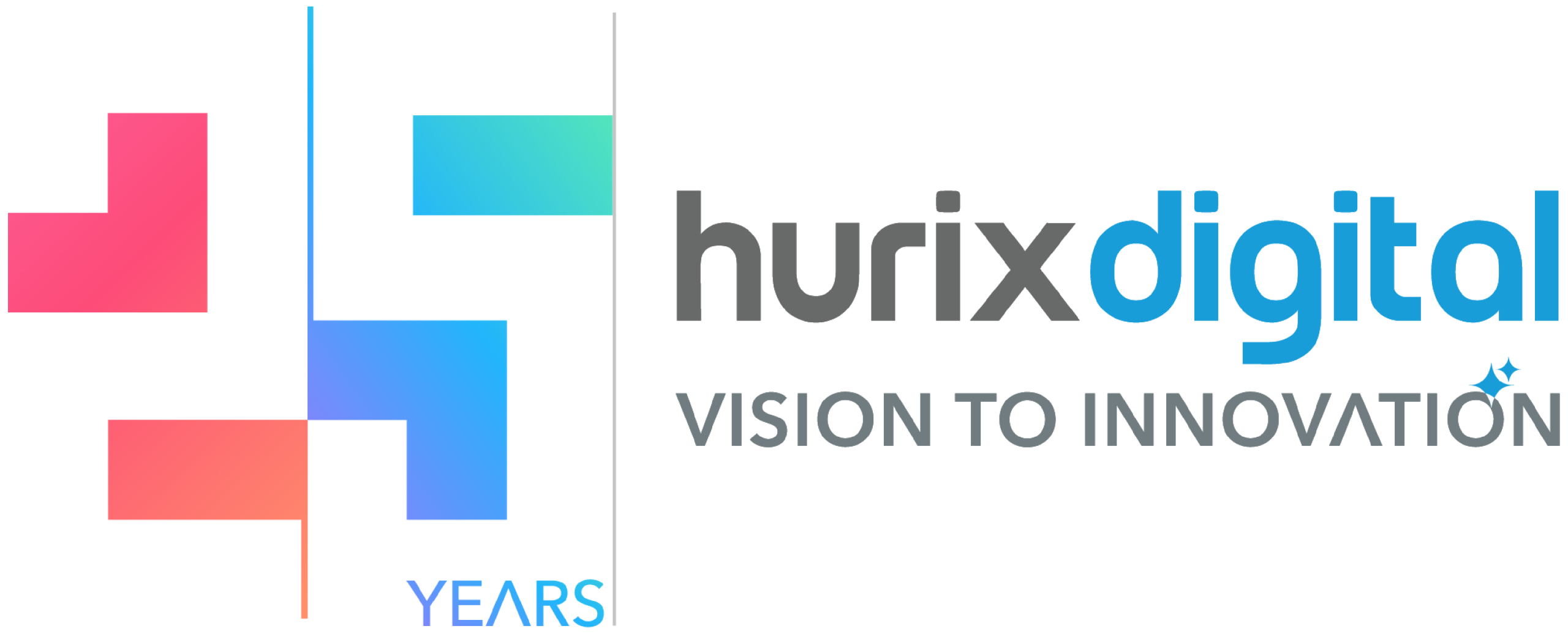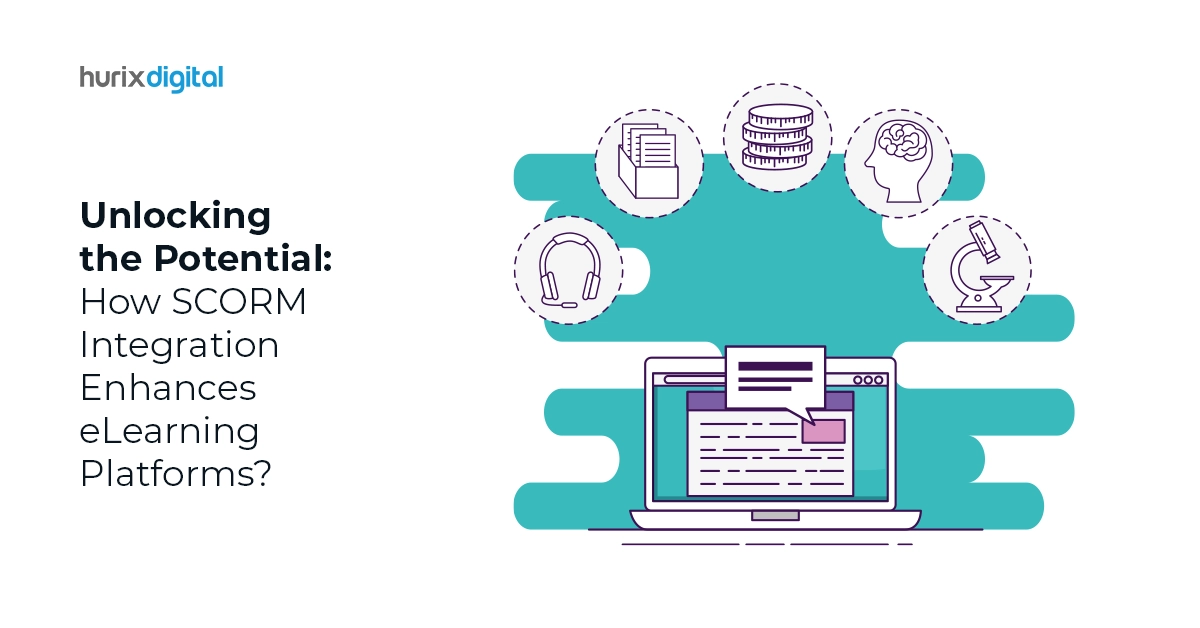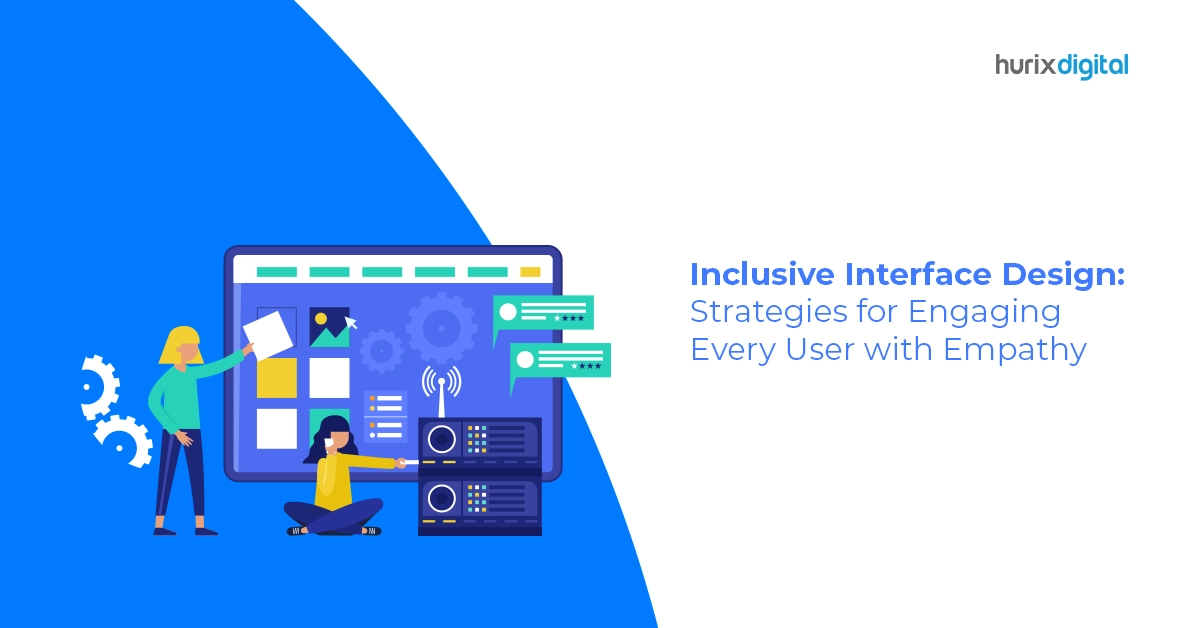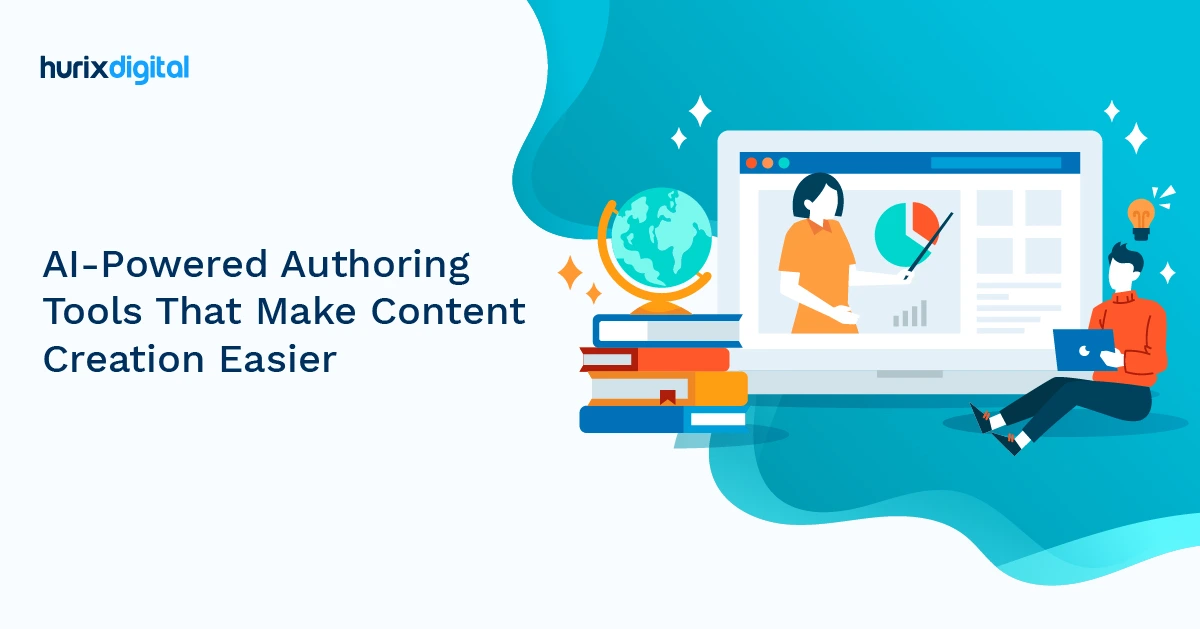
Ravi Sharma
July 9, 2025
AI-Powered Authoring Tools That Make Content Creation Easier
Summarize with:
Table of Contents:
- What Does SCORM Mean?
- What are AI-powered eLearning Authoring Tools?
- Different Types of SCORM Authoring Tools
- How to Select the Best SCORM Creation Software
- Exploring Leading AI-Powered eLearning Tools
- Choosing the Right Tool: Matching Your Needs with the Platform’s Strengths
- How to Utilize a SCORM Authoring Tool
- Three Tips for Using AI-Powered eLearning Authoring Tools Effectively
- Key Takeaways
What Does SCORM Mean?
SCORM, short for the Sharable Content Object Reference Model, is a set of technical standards that helps create training content and courses compatible with a particular platform. It interacts with the platform’s LMS and outlines the course structure. SCORM 1.0 celebrated its 20th anniversary in 2020, while SCORM 2004 is another version that offers comprehensive reporting capabilities. SCORM 1.2, established in 2001, accounts for more than 70% of eLearning content today.What are AI-powered eLearning Authoring Tools?
These tools are the next generation of eLearning software with AI algorithms that streamline content creation, enhance learner engagement, and personalize the experience. The global collaborative eLearning authoring tools have gained traction and will continue to grow with a forecasted CAGR of 13.1% respectively. Unlike traditional tools that primarily focus on content authoring, AI-powered authoring tools offer additional features like:- Smart Content Generation: Generate text, quizzes, multimedia, and personalized learning paths using AI templates and algorithms.
- Adaptive Learning: Tailor the learning journey based on individual learner needs and performance, adjusting difficulty levels and suggesting relevant content.
- Automated Feedback and Assessments: Use AI to provide personalized feedback on assignments and assessments, saving instructors valuable time.
- Immersive Experiences: Leverage AI to create interactive simulations, AR/VR environments, and gamified elements for enhanced engagement.
- Data-Driven Insights: Gain valuable insights into learner progress and course effectiveness through AI-powered analytics dashboards.
Different Types of SCORM Authoring Tools
 There are mainly two broad categories of SCORM authoring tools that vary based on various factors:
There are mainly two broad categories of SCORM authoring tools that vary based on various factors:
1. Desktop SCORM Authoring Tools
This SCORM creation software is installed on a computer and can be operated offline. Such tools come with various customization options and advanced authoring features.2. Cloud-Based SCORM Authoring Tools
These tools are accessible anytime and anywhere via a web browser. They are best for remote teams and have rich features.How to Select the Best SCORM Creation Software
With the plethora of tools available online, it is a crucial task to pick the best one for creating eLearning content. Here are some critical factors that you must consider before settling for the best authoring software: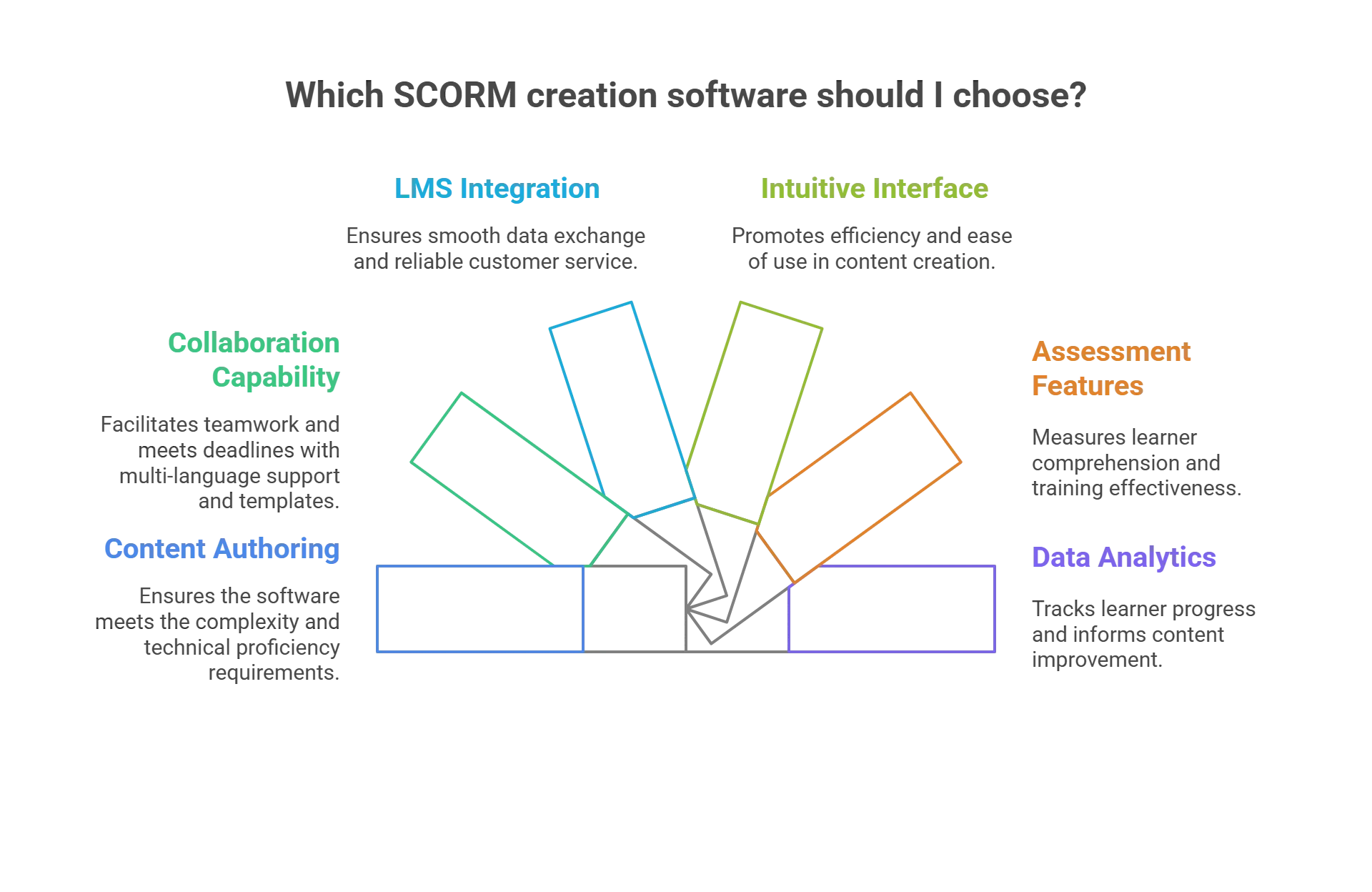
1. Content Authoring Capabilities
Determine the type of content you need to create, assess your team’s technical proficiency, and ensure compatibility with the complexity of the chosen software.2. Collaboration Capability
Choose a tool that supports collaboration and feedback gathering. The chosen software must offer multi-language support, shared resource centers, and co-authoring functionalities to facilitate teamwork. It should also be equipped with ready-made templates and eLearning assets to meet tight deadlines.3. Integration with Existing LMS
Ensure compatibility with your Learning Management System to facilitate smooth integration and data exchange. Besides, always trust authoring tools that offer reliable and responsive customer service to assist with any technical issues.4. Intuitive User Interface
Look for a user-friendly interface that manages content creation, design, publishing, and distribution. Look for a platform that promotes efficiency and ease of use.5. Assessment Capabilities
Choose authoring tools equipped with assessment features. This will help you measure learner comprehension and training effectiveness.6. Training Data Analytics
Look for the best authoring tools that provide comprehensive data analytics. Such measures can help you track learner progress, performance, and engagement. You can make informed decisions and edit the content for continuous improvement.Exploring Leading AI-Powered eLearning Tools
With the AI landscape constantly evolving, the list of top contenders is subject to change. However, some established players have already earned their stripes: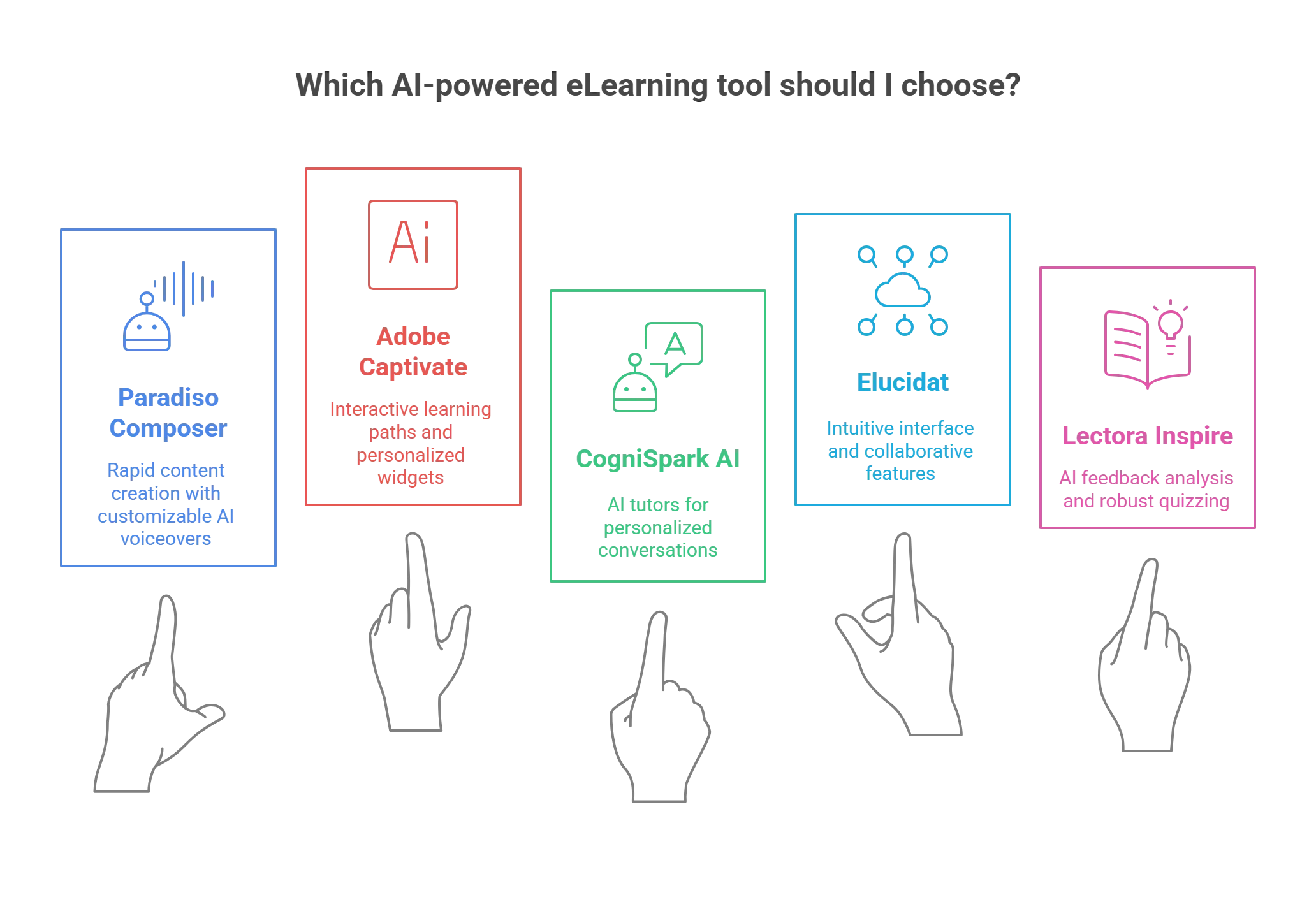
1. Paradiso Composer
Featuring a user-friendly interface and customizable AI voiceover templates, Paradiso Composer excels in rapid content creation. The AI capabilities generate text, quizzes, and even video scripts based on your input. It also offers powerful features like adaptive learning and supplemental content.2. Adobe Captivate
A well-known name in the eLearning world, Captivate has embraced AI with fervor. Its interactive learning path recommendations and personalized widgets functionality enhance learner engagement, while its simulations provide valuable insights into course performance.3. CogniSpark AI
This unique platform focuses on integrating AI tutors within your courses. These virtual tutors engage learners in personalized conversations, answer questions, and provide guidance, creating immersive and interactive learning experiences.4. Elucidat
Known for its intuitive interface and collaborative features, it’s part of the cloud-based tools that leverage AI to personalize learning paths and deliver adaptive assessments. Its user-friendly environment further enhances knowledge retention and engagement.5. Lectora Inspire
This powerful authoring tool has recently incorporated AI-powered feedback analysis, helping instructors assess learner progress more efficiently. Its robust quizzing engine and branching scenarios also contribute to personalized learning experiences.Choosing the Right Tool: Matching Your Needs with the Platform’s Strengths
With so many great options available, finding the perfect AI-powered eLearning authoring tool requires careful consideration. Here are some key factors to ponder:- Budget: AI-powered tools can be pricier than traditional ones. Compare pricing models and consider your organization’s budget before making a decision.
- Target Audience: Take into account the learning needs and preferences of your audience. Choose a tool that caters to their specific requirements and learning styles.
- Ease of Use: If you’re not tech-savvy, opt for a user-friendly platform with intuitive features and minimal technical know-how.
- Content Needs: Does your content require text generation, multimedia creation, or adaptive learning features? Choose a tool that caters to your specific needs.
- Technical Expertise: Some tools require greater technical understanding than others. Assess your team’s comfort level with technology before diving into AI functionalities.
- Scalability: Will the platform cater to your current and future needs? When making your choice, consider the size and complexity of your courses.
- Integration with Existing Systems: Ensure the tool seamlessly integrates with your existing Learning Management System (LMS) and other eLearning platforms you use.
How to Utilize a SCORM Authoring Tool
Here is a step-by-step procedure to use SCORM authoring tools: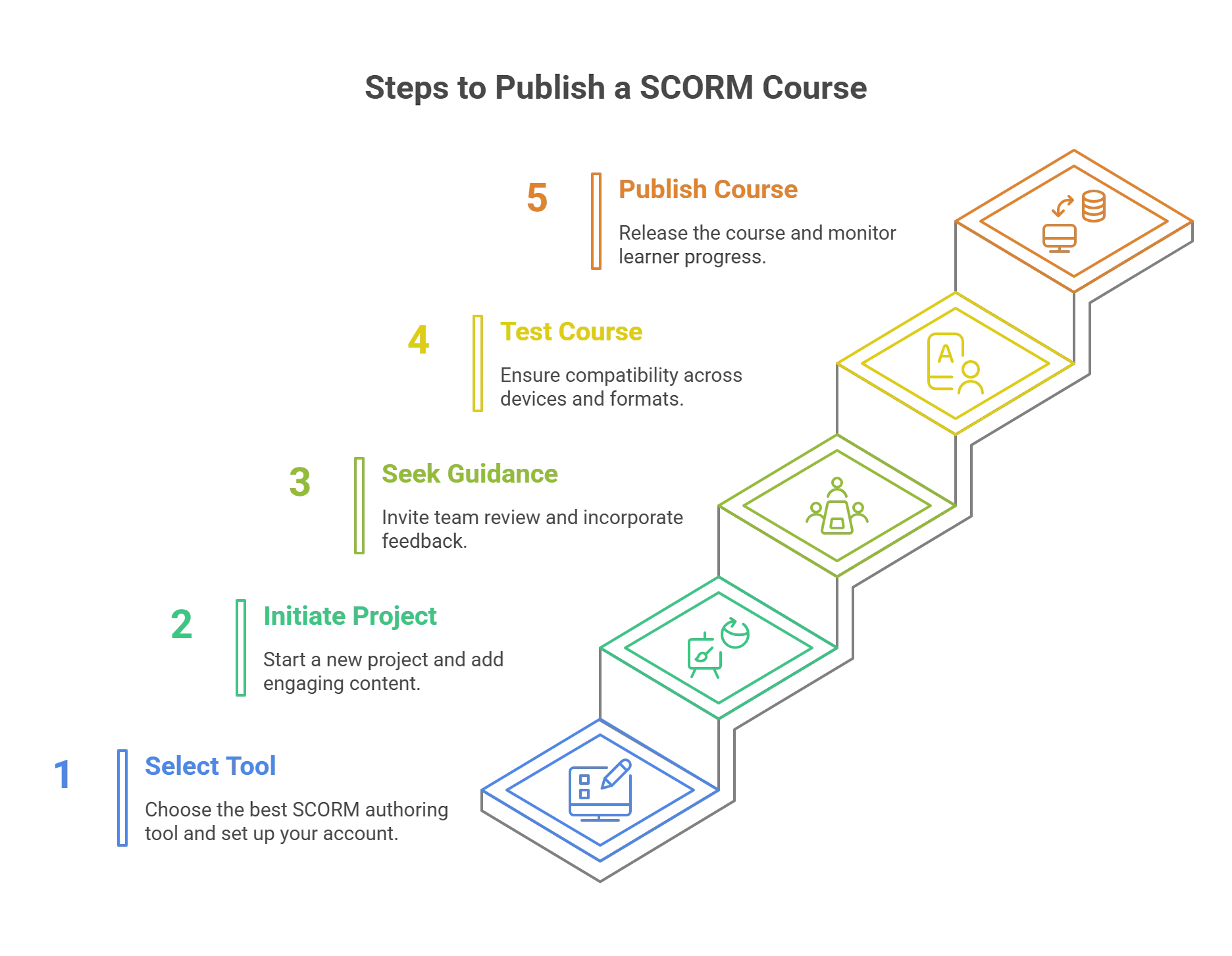
Step 1 – Select an Appropriate Tool and Set Up an Account
After doing your homework on the best SCORM authoring tools, assess the benefits and select the option that best suits your needs. Initiate your cloud-based account and add users to commence content creation. For desktop tools, you can download and install the software and launch it to initiate course development.Step 2 – Initiate a New Project and Incorporate Content
Begin a new project by opting for a template or starting from scratch. Establish brand styles to ensure consistency. Add your content to the project, and keep it concise and engaging to enhance learner retention. Integrate interactive elements to maintain learner focus.Step 3 – Seek Guidance
It is imperative to invite a team review after sharing your course content with your team. Seek feedback and guidance, and make relevant changes and edits based on industry demands and the personalized needs of the learners.Step 4 – Test Your Course
After the course is completed, it is crucial to test it across devices, screen sizes, and formats to ensure compatibility and smooth operation. You must also ensure that your eLearning course complies with SCORM standards.Step 5 – Publish Your Course
Once you are satisfied with the outcome, you can release your eLearning course as a SCORM package and upload it to your LMS. Start monitoring learners’ progress, and use your authoring tool to make necessary updates for continuous improvement.Three Tips for Using AI-Powered eLearning Authoring Tools Effectively
The field of AI is constantly upgrading. Keep abreast of the latest developments and advancements in AI-powered eLearning tools to ensure you’re using the most effective and innovative approaches: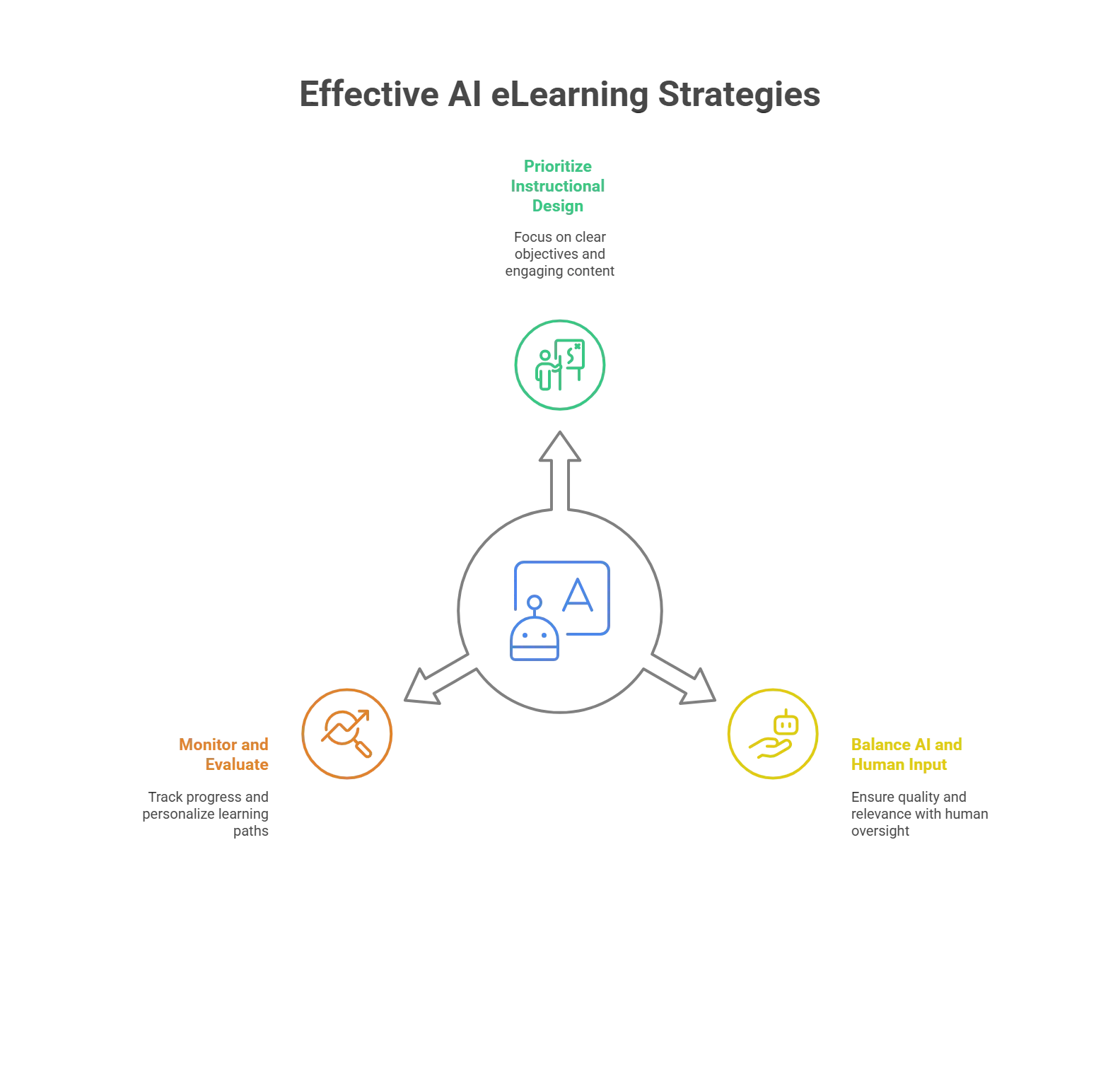
1. Prioritize Instructional Design Principles
Focus on crafting clear learning objectives, engaging content, and meaningful assessments. Use AI to enhance these elements rather than dictate them. Ensure that the AI features you employ align with your chosen teaching approaches and learning theories.2. Balance AI and Human Input
AI can generate interactive eLearning content and automate tasks, but human oversight is crucial to ensure quality, accuracy, and relevance. Review AI-generated content, provide context and guidance, and provide personalized feedback to complement the AI’s capabilities. Facilitate discussions and create a more engaging and supportive learning environment.3. Monitor and Evaluate Continuously
Leverage the data generated by AI tools to track learner progress, identify areas for improvement, and personalize learning paths even further. Use this data to make informed decisions about content adjustments, instructional approaches, and resource allocation. Seek feedback regularly from learners on their experiences with AI-powered courses. This feedback can help you gauge the effectiveness of the AI features, identify any usability issues, and ensure the tools are meeting learners’ needs and expectations.Key Takeaways
The integration of AI in eLearning courses is still in its early stages, but the future promises exciting possibilities. Imagine AI-powered tools that automatically adapt content based on real-time learner emotions, create personalized learning experiences based on individual strengths and weaknesses, and even proactively diagnose learning gaps and difficulties. However, this requires responsible development and ethical considerations. As AI continues to evolve, it’s our responsibility to ensure its usage promotes inclusivity, accessibility, and a safe learning space for all. AI-powered eLearning authoring tools are revolutionizing the way we create and deliver learning experiences. At Hurix Digital, we leverage the power of AI to create engaging, personalized, and effective learning journeys for our learners. To know more, contact us today!Summarize with:

Vice President & SBU Head –
Delivery at Hurix Technology, based in Mumbai. With extensive experience leading delivery and technology teams, he excels at scaling operations, optimizing workflows, and ensuring top-tier service quality. Ravi drives cross-functional collaboration to deliver robust digital learning solutions and client satisfaction
 Upcoming Masterclass | Build an Army of Brand Evangelists using Training & Development | November 20th, 8:30 AM PDT | 11:30 AM EDT | 10:00 PM IST
Upcoming Masterclass | Build an Army of Brand Evangelists using Training & Development | November 20th, 8:30 AM PDT | 11:30 AM EDT | 10:00 PM IST
